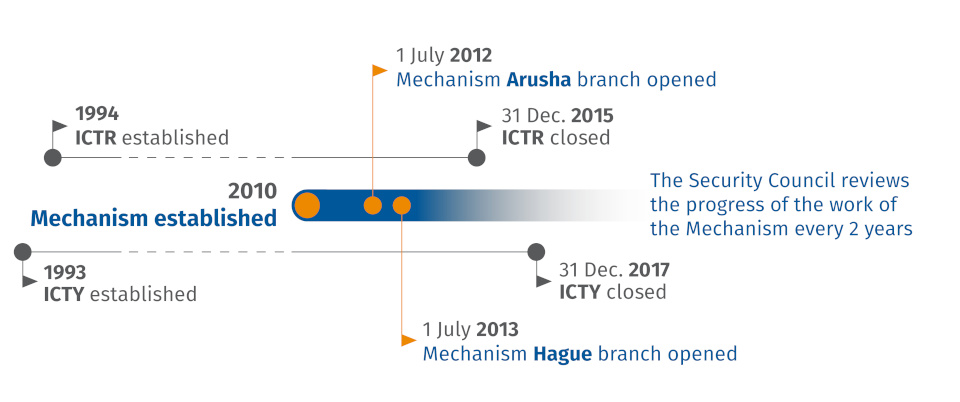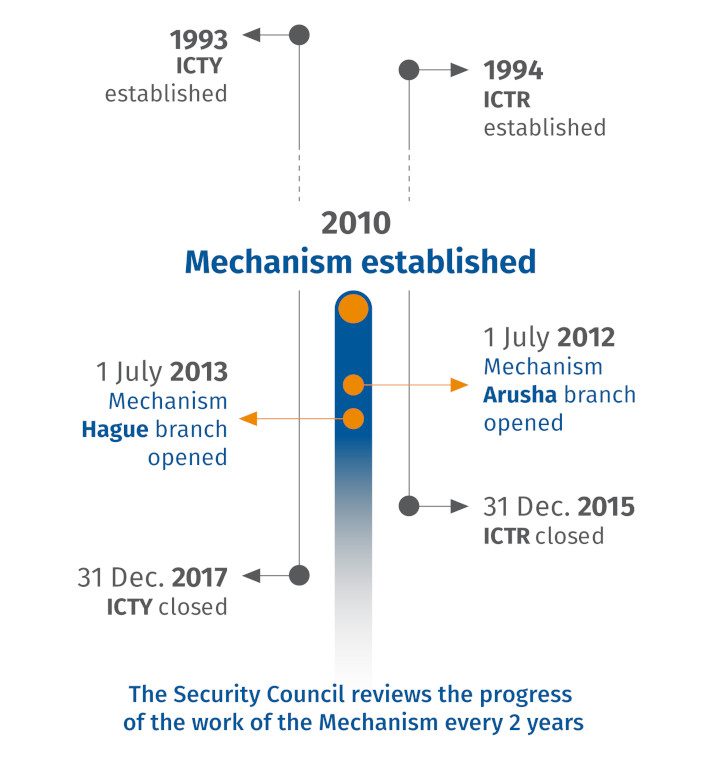About
By establishing the Mechanism, the Council has helped to guarantee that the closure of the two pioneering ad hoc tribunals does not open the way for impunity to reign once more.
President Theodor Meron, UN Security Council, 7 June 2012
The International Residual Mechanism for Criminal Tribunals ("Mechanism") is mandated to perform a number of essential functions previously carried out by the International Criminal Tribunal for Rwanda (“ICTR”) and the International Criminal Tribunal for the former Yugoslavia (“ICTY”). In carrying out these essential functions the Mechanism maintains the legacies of these two pioneering ad hoc international criminal courts and strives to reflect best practices in the field of international criminal justice.
The United Nations Security Council created the Mechanism on 22 December 2010 as a “small, temporary and efficient structure”. The Mechanism started operating on 1 July 2012 in Arusha, United Republic of Tanzania, and on 1 July 2013 in The Hague, the Netherlands. The Arusha branch inherited functions from the ICTR, and the Hague branch from the ICTY.
During the initial years of the Mechanism’s existence, it operated in parallel with the ICTR and the ICTY. Following the closure of the ICTR (on 31 December 2015) and the ICTY (on 31 December 2017), the Mechanism continued to operate as a stand-alone institution.

